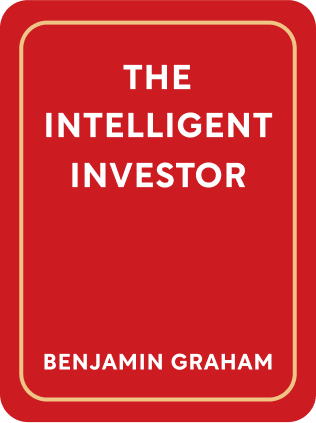

This article is an excerpt from the Shortform book guide to "The Intelligent Investor" by Benjamin Graham. Shortform has the world's best summaries and analyses of books you should be reading.
Like this article? Sign up for a free trial here .
What are overpriced stocks? How can you identify overpriced stocks, and how are they different from bargain shares?
Overpriced stocks are stocks that have a higher share value than the true value of the company. In The Intelligent Investor, Benjamin Graham explains how to identify overpriced stocks.
Read more about overpriced stocks below and how they differ from bargain shares.
Contrasting Bargain Stocks and Overpriced Stocks
Graham extends his security analysis to comparing eight pairs of publicly traded businesses. The overall purpose was to illustrate how the market reacts differently to two types of companies:
- The value stock: a solid, steady performer with reliable growth, but that might have fallen out of fashion with the market. At low prices, the stock would be a bargain.
- The growth stock: a flashy company that showed faster recent growth or higher net margins, thus having its stock price bid up to high multiples of earnings. These stocks are speculative and likely one of the overpriced stocks, by Graham’s standards.
In some pairs, the companies were chosen from the same industry (such as Real Estate Investment Trust vs. Realty Equities Corp. of New York) while in other pairs, the companies were in very different industries and were chosen merely because they had similar names (International Flavors & Fragrances vs. International Harvester Co., a machinery manufacturer).
In most pairs, the market valued the growth stock at much higher multiples of earnings. In some cases, the growth company even had a higher total valuation than the value company, even though the value company showed multiples higher revenue, earnings, and assets.
Take this comparison of the value stock Air Reduction Co. and the over-valued Air Products and Chemicals (both in the industrial gases industry) at the same point in time in 1969:
| Air Reduction | Air Products | |
| Price per Share | 16.375 | 39.5 |
| Valuation | $185 million | $231 million |
| Revenue | $488 million | $222 million |
| Net income | $20.3 million | $13.6 million |
| Earnings per share | $1.80 | $2.40 |
| 5-year change in per-share earnings | +19% | +59% |
| Dividends paid since | 1917 | 1954 |
| Price-to-earnings ratio | 9.1x | 16.5x |
| Assets-to-liabilities ratio | 3.8x | 1.5x |
| Price-to-book value | 75% | 165% |
Here, the market was clearly enthusiastic about the higher growth rate of Air Products and its higher earnings per share, thus valuing it higher than Air Reduction, even though the latter was over twice the size and had a longer dividend history. Possibly Air Products had higher long-term prospects as a business, but Air Reduction was a better prospect as a stock investment. By 1971, Air Reduction showed a 50% increase in stock price, compared to the lower 30% for Air Products.
Some valuations were simply nonsensical, where a company had high valuations despite showing poor profitability and growth rates. Take this comparison of the stable Whiting Corp. (an industrial equipment manufacturer) and the ludicrously priced Willcox & Gibbs (a small conglomerate):
| Whiting | Willcox & Gibbs | |
| Price per Share | 17.75 | 15.5 |
| Valuation | $11.2 million | $44.6 million |
| Revenue | $42.2 million | $29 million |
| Net income before special item | $1.01 million | $0.35 million |
| Earnings per share | $1.91 | $0.08 |
| 10-year change in earnings | +354% | decrease |
| Dividends paid since | 1954 | None since 1957 |
| Price-to-earnings ratio | 9.3x | 127x |
| Assets-to-liabilities ratio | 3.0x | 1.55x |
| Price-to-book value | 70% | 470% |
Whiting was clearly the superior performing company and a bargain buy. Willcox was the relative darling of the market, sporting a valuation it didn’t deserve by Graham’s criteria.
In his commentary, Zweig takes the pair-comparison strategy into the dotcom era, highlighting even more drastic discrepancies. At the end of 1999, Internet company Yahoo! had a market value of $114 billion—263 times its revenues of $433 million, and 3,264 times its earnings of $34.9 million. In comparison, fast-food franchise company Yum! had a valuation of $6 billion on revenues of $8 billion. Despite being 17 times the size of Yahoo! In revenue, it was 1/19th of its market value. Ultimately, Yum! enjoyed a stock price rise of 25% by 2002, while Yahoo! suffered a 92% loss in the same period.
Reminder: even if a stock is cheap, it may not be a sound investment. Graham’s criteria of growth and profitability still apply. International Harvester Co. was a large company with $2.6 billion in sales but had a tepid total growth of 9% over 5 years and poor profitability of 2.6% net income over revenue. Despite its large size, Harvester was growing too slowly and showed too little profitability to meet Graham’s investment criteria.
The overall point: to decide whether a stock is a good investment, you must do your own reasoned analysis. There is no such thing as good stocks and bad stocks—only cheap stocks and overpriced stocks.
- A strong company is not a good investment if its stock is overpriced.
- A stock at a low price is not a good investment if the company has poor future prospects.
- A stock with tremendous hype around growth, and high prices to match, is likely too speculative for intelligent investors.
- Yet a once-hyped stock that falls dramatically in value can then turn into a bargain stock worth buying.

———End of Preview———
Like what you just read? Read the rest of the world's best book summary and analysis of Benjamin Graham's "The Intelligent Investor" at Shortform .
Here's what you'll find in our full The Intelligent Investor summary :
- Key advice from what Warren Buffett considers the "best book about investing"
- The 2 major indicators you should use for evaluating stocks
- How you can use aggressive or defensive investing strategies






